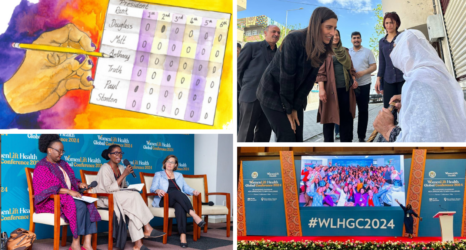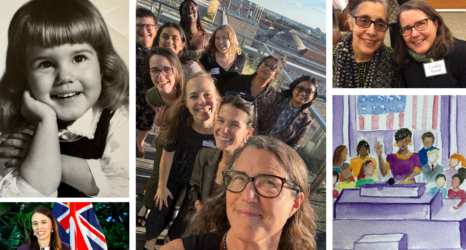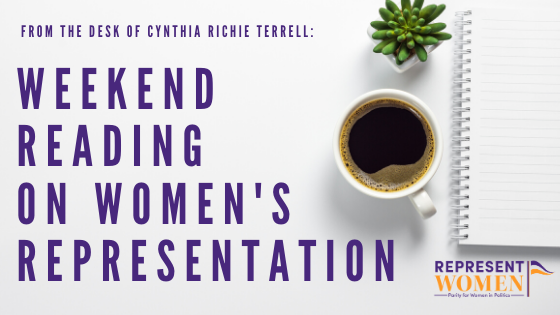
Weekend Reading on Women’s Representation is a compilation of stories about women’s representation in politics, on boards, in sports and entertainment, in judicial offices and in the private sector in the U.S. and around the world—with a little gardening and goodwill mixed in for refreshment!
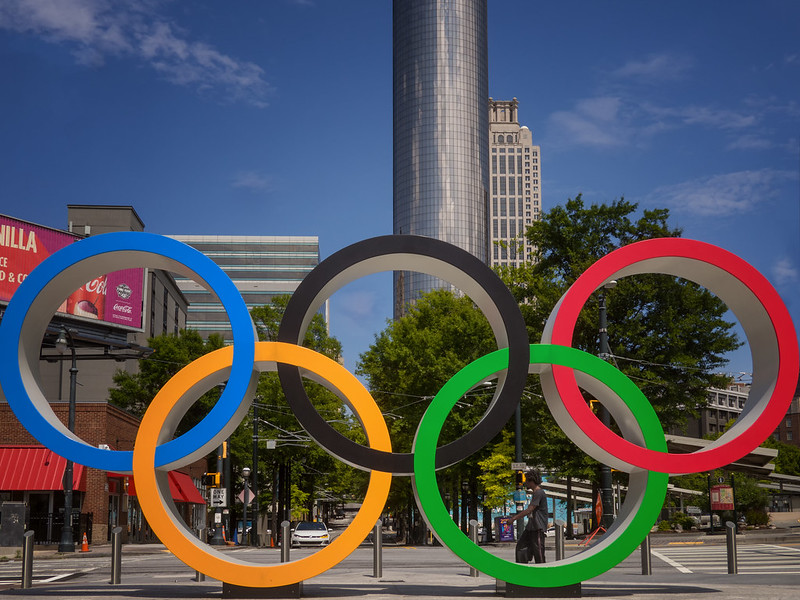
There was good news from the International Olympic Committee this week which held a series of online gatherings to discuss strategies to increase women’s representation in governing bodies and leadership roles. Here is a link to the full report from the Gender Equality Forum and an excerpt from the first session which illustrates the power of setting targets and enforcing them to make sustained progress toward gender balance:
Marisol Casado, IOC Member and Chair of the ASOIF Diversity and Gender Equality Group, opened the webinar by saying: “Today there is a wide-ranging call for greater inclusivity and equality, and we must take the opportunity this current crisis provides to rebuild and innovate our progress towards a more inclusive, gender-equal and sustainable Olympic Movement.”
“Throughout my career and in my various roles, I have seen that the best work can be done when it is done as a team. When we work together, we have access to different ways of thinking, and therefore more ideas.”
Casado pointed out that some fundamental goals have already been reached: “We have achieved gender balance in athlete participation at the Olympic Games, with a competition schedule much more balanced to ensure equal exposure for all athletes. Several sports organisations, including the IOC, have reached the minimum target of 30 per cent female representation in their governing bodies, and the IOC guidelines for gender-balanced portrayal have been widely adopted to ensure equal opportunities.”
LEADERSHIP: “ENTRENCHING GENDER EQUALITY IN ELECTORAL PROCESSES”
The first session, called “Entrenching Gender Equality in Electoral Processes”, focused on the minimum target of 30 per cent female representation in governing bodies. Recommendation 20 of the IOC Gender Equality Review Project states that “Olympic Movement partners should review their electoral processes with a view to developing strategies for gender-balanced representation in their governance bodies”. Participants were presented with two case studies of International Federations that have successfully entrenched gender equality in their policies and statutes.
WORLD ATHLETICS: “TIME FOR CHANGE” INITIATIVE
Stephanie Hightower, Gender Leadership Taskforce Chair at World Athletics, was instrumental in the development and implementation of the “Time for Change” initiative, which resulted in World Athletics entrenching incremental gender targets in its constitution in order to achieve gender-equal representation by 2027.
Hightower explained how, through global and regional women’s leadership and administration seminars and symposiums, World Athletics ensured that a robust pipeline of eligible female candidates was available for election, allowing the Federation to meet its targets.
She said: “In 2017, World Athletics appointed a Gender Equality Taskforce, which came up with a “framework for change” to promote a cultural change and embed gender-equality objectives and principles in the mission and in the general restructuring of the organisation. This activity led to the creation of a strategy and clear gender-based actions to be undertaken by World Athletics.”

Saskia Brechenmacher of the Carnegie Endowment for International Peace wrote a compelling piece about the impact of gender quotas and other strategies to advance women’s representation and empowerment around the globe:
In 1916, the American essayist Agnes Repplier wrote that “democracy forever teases us with the contrast between its ideals and its realities, between its heroic possibilities and its sorry achievements.” For advocates of gender equality, this tension feels familiar.
Women around the world have made major political strides amid the past half century’s wave of democratization. They are running for office and winning elections at unprecedented rates. More than seventy countries have adopted some form of gender quota. Social norms appear to be changing as well: in the United States, for example, Americans of both political stripes prefer gender-balanced decision making bodies.
At the same time, the overall pace of change toward political parity has been slow, even in many established democracies. In some places, quotas have established a de facto ceiling on women’s representation that has proven difficult to break through. Men still dominate the most powerful leadership positions, and women’s increased presence in political institutions has not necessarily led to meaningful change in women’s everyday lives. The recent rise of illiberal populism in Turkey, Brazil, and elsewhere has gone hand in hand with a reassertion of traditional gender norms. The coronavirus pandemic creates further risks of backsliding, as economic crises generally reinforce gender inequities while allowing political elites to bury demands for inclusion amid “more urgent priorities.”
These challenges point to a fundamental problem: reformers have too often assumed it is possible to change power relations by bolstering women’s representation in existing systems and institutions. Women’s continued underrepresentation in politics is often implicitly or explicitly framed as a shortcoming on the part of women, as in suggestions that female candidates lack confidence, skills, or networks.
While efforts to train women for public office can be helpful, building truly gender-equal democracies requires more than just adding women to the mix. It requires transforming institutions that have been built on exclusion. It requires tackling the entrenched barriers that discourage women from engaging in electoral politics and make it harder for them to succeed—from financial hurdles and unequal caregiving burdens to gender stereotypes and violence. It requires viewing the political participation of marginalized groups not as a desirable add-on but as a central benchmark of democratic health.
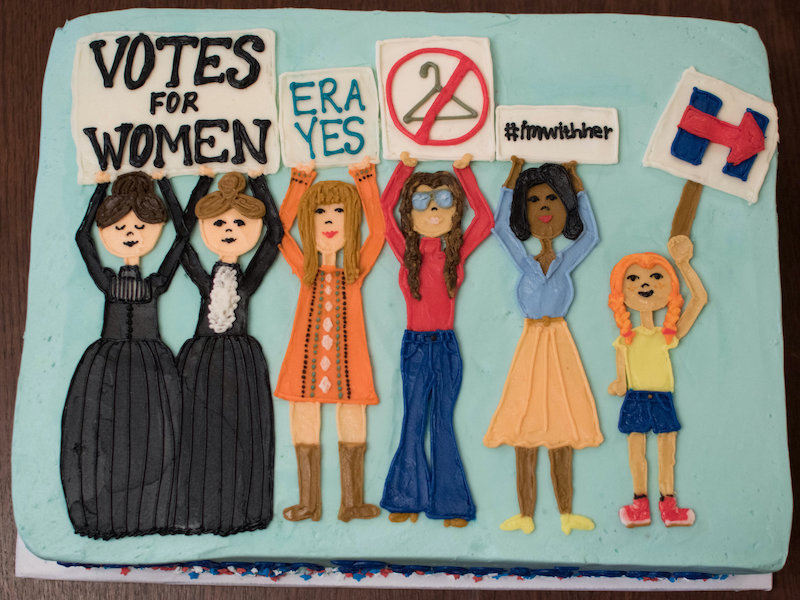
There was an encouraging story on All Things Considered by Jim Zarroli that reported on the increase in women donors in 2020 citing data from our wonderful allies at the Center for Responsive Politics—for more details on PAC and donor support for women candidates be sure to read RepresentWomen’s recent report:
On election night 2016, Gretchen Sisson was so sure Hillary Clinton would defeat Donald Trump that she and her husband invited 80 people to their San Francisco home for a party. They even had a giant sheet cake made that celebrated suffragists and the Equal Rights Amendment. On the side was written, “Madam President.”
That’s not how it turned out. Trump won in a stunning outcome, and no one could bear to eat. Afterward, Sisson and her family ended up eating the cake themselves for weeks. It was, she says now, a lesson in hubris.
But as time passed, a despondent Sisson decided to channel her unhappiness into political donating, a world where women like her are increasingly making their voices heard.
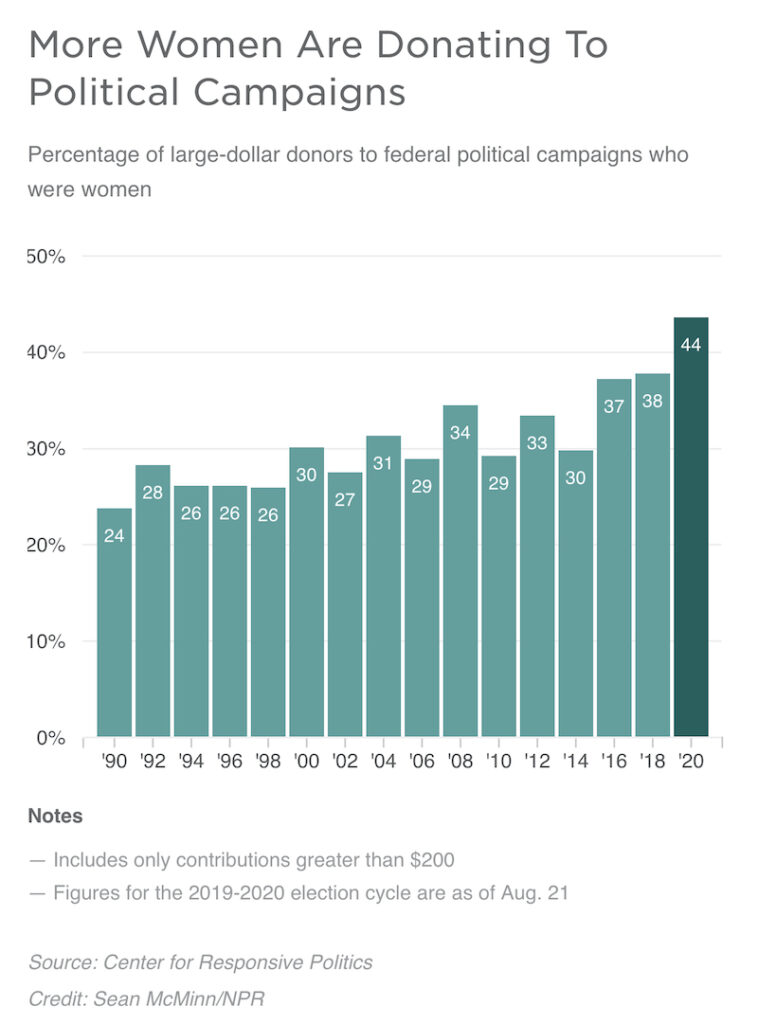
This election cycle, the share of women giving money to political campaigns has already risen to 43.5% after never topping 28% in the 1990s — “a pretty significant jump,” says Sheila Krumholz of the Center for Responsive Politics. (The group looked only at donations larger than $200.)
That surge provides women with greater political clout, and it could make a big difference in some of this year’s closest political races.
While donations to both parties have risen, women tend to favor Democrats. President Trump has received 37% of his donations from women so far during this election cycle, while almost 48% of the contributors to former Vice President Joe Biden have been female, Krumholz says.

Atima Omara reflected on her own run for office and on the opportunities for Black women to run and win in predominantly white districts in a piece for Gender On The Ballot:
My campaign for the Virginia General Assembly in 2014, in a district that was predominantly white, was questioned even by people who were supportive. After I lost, I heard the refrain, “Well if you run again next time, will you move to a favorable district?”
Favorable, meaning more racially and ethnically representative, despite my having service and political work relevant to my home district. This pressure to run in majority nonwhite districts is often heard by Black and other candidates of color, as highlighted in this 2018 NY Times piece about the challenges of running while Black in predominantly white or rural districts.
Despite some success stories of Black women who ran for office in districts not predominantly Black, these persistent limiting beliefs have affected many a good black candidate’s prospects for recruiting top staff, raising money, and become a self- fulfilling prophecy that they are not competitive enough to invest in. This is made worse when you are a Black woman who is already dealing with questions of qualifications and competitiveness because of being a woman. To compensate, women may find that they need to spend time waging a “campaign of belief,” highlighting how they can win.
In 2018, a historic year, many Black women candidates pushed past this to win major victories in non majority Black Congressional Districts: Jahana Hayes, Ayanna Pressley, Lucy McBath and Lauren Underwood. How? These Black women ran on their compelling life stories and work that resonated with voters.For Jahana Hayes, it was history as a working mom and her career an educator, serving as tutor and teacher to many in her district. For Lucy McBath, it was being a working mom who had lost her child to gun violence and her work in the anti-gun violence movement, which resonated with a lot of moms in a primarily suburban Congressional district.
Black women candidates, drawing on their lived experience at the intersections of society, bring critical additional knowledge and understanding to a range of issues members of their community experience.
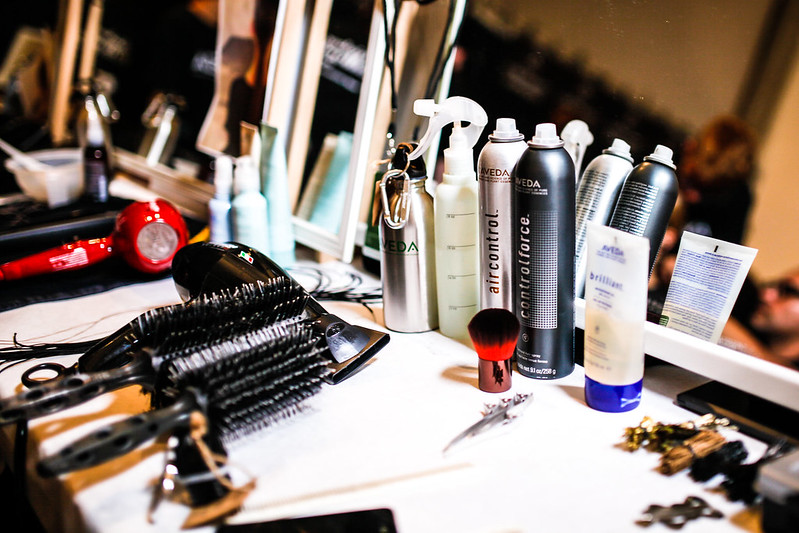
I so enjoyed reading Jennifer Weiner‘s column in The New York Times about the norms around women’s self-care that was inspired by Speaker Pelosi’s seemingly innocent visit to a hair salon last week:
A 2014 survey showed that women spent 355 hours, or two weeks a year, on their appearance. Another in 2017 found the cost of such upkeep was $3,756 a year, or $225,360 over the course of a lifetime.
Mrs. Clinton reckoned she’d spent more than 600 hours in a salon chair. And if you stopped in your nearest salon at seven in the morning, before the pandemic at least, you wouldn’t have seen women enjoying a relaxing break, but instead women for whom a blowout is a necessary part of their work day, in industries where styled hair is as mandatory as shoes.
The pandemic has given us so many awful things but, along with them, it has given us a chance for a reset. A chance to slip the surly bonds of daily blowouts and monthly touch-ups and regular nail fills and eyelash extension replacements. It’s a chance, for those so inclined, to find a middle ground between pre-pandemic feast and work-from-home famine—to reconfigure routines, to embrace and normalize a more natural look.
Women of the world, unite! (That includes you, Madam Speaker!) You have nothing to lose but your highlights, and nothing to gain but money and time.

Alyse Nelson and the Vital Voices Global Partnership have released what looks like a marvelous volume in recognition of the 25th anniversary of the Beijing Conference on Women’s Rights:
Women’s rights are human rights. When that phrase was uttered on this day 25 years ago, a wave of progress for gender equality was ignited – one we’re still fighting for today.
Today, on this critical anniversary, we’re so excited to OFFICIALLY LAUNCH our new book celebrating the women leaders fighting for progress. Vital Voices: 100 Women Using their #PowertoEmpower is an unprecedented book illustrating the transformative power of women’s leadership across cultures, sectors and generations.
With portraits and first-person narratives from women such as Malala Yousafzai, Jacinda Ardern, Joy Buolamwini, Megan Rapinoe, Donna Langley, Hillary Clinton and so many more, you’ll want this inspiration in your own home! Edited by Alyse Nelson, art by Gayle Kabaker Illustration, published by ASSOULINE.
Donate $95 or more to get your copy as a thank you from Vital Voices.

Many thanks to Katherine Gehl for sending me a #WhenThereAreNine mug. I am so glad to be part of the Institute for Political Innovation team. I suspect RBG might like a mug too?

Remember to check out this week’s feminist reading suggestions from the team at RepresentWomen and to engage with RepresentWomen on Twitter, Facebook, LinkedIn and Instagram.




